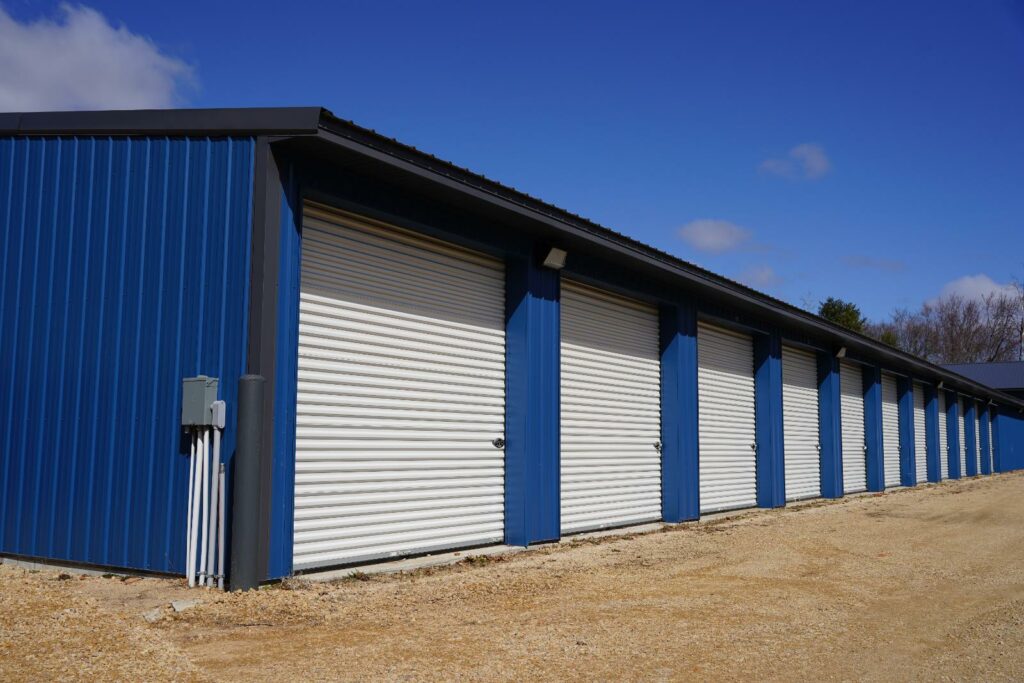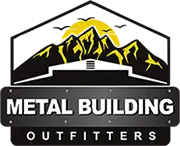
Contents
Are you ready to elevate your property with a durable metal garage that stands the test of time?
Imagine a seamless installation process where each step effortlessly falls into place, saving you time and energy.
With the right guidance, you can navigate through the intricacies of setting up your metal garage without unnecessary hassle.
Let’s unlock the secrets to a smooth and efficient installation journey that will leave you with a sturdy structure to protect your vehicles and belongings.
Key Takeaways
- Properly prepare the site and foundation for stability and durability
- Organize materials efficiently and plan the assembly sequence meticulously
- Prioritize equipment safety, maintenance, and utilization for smooth installation
- Establish clear communication channels, implement safety measures, and conduct post-installation inspections
Site Preparation
Before beginning the metal garage installation process, ensure the site is level and clear of any debris or obstructions. Ground leveling is crucial for a stable foundation. Start by removing any rocks, branches, or other items that could interfere with the structure. Next, focus on soil compaction to prevent shifting or sinking over time. Use a compactor to firmly pack down the ground, ensuring it’s solid and uniform. This step is essential for the longevity of your metal garage.
Once the site is cleared and leveled, mark the perimeter of the garage area. Use stakes and string to outline the boundaries accurately. Double-check the measurements to guarantee a precise layout. It’s vital to take your time during this phase to avoid any future complications.
After marking the area, consider adding a layer of gravel for additional stability. The gravel will aid in drainage and help prevent water from pooling around the structure. Spread the gravel evenly across the site and compact it thoroughly. This extra step will enhance the overall durability of your metal garage.
Foundation Considerations
To ensure a solid foundation for your metal garage, assess the soil composition and consider any necessary reinforcements based on the ground conditions. Concrete thickness plays a crucial role in providing stability and durability to your structure. Typically, a concrete slab with a minimum thickness of 4 inches is recommended for metal garage foundations. However, this can vary depending on the weight of the structure and the soil type.
Leveling techniques are essential to prevent future structural issues. Before pouring the concrete, ensure the ground is level and compacted to avoid any unevenness that could compromise the integrity of the foundation. Using tools like a screed board or laser level can help achieve a perfectly level surface.
Moreover, reinforcement such as rebar or wire mesh should be considered within the concrete to enhance its strength and prevent cracking over time. These reinforcements provide additional support, especially in areas prone to soil movement or seismic activity.
When planning the foundation for your metal garage, consult with professionals if needed to determine the best course of action based on your specific site conditions. Investing time and effort into the foundation phase will ensure a stable and long-lasting structure for your metal garage.
Efficient Material Organization
Assessing the soil composition and ensuring a solid foundation for your metal garage sets the groundwork for efficient material organization during the installation process. To streamline the installation and make the most of your time, consider the following tips:
Storage solutions: Invest in a variety of storage options such as bins, shelves, and tool organizers to keep all your materials neatly arranged and easily accessible. Labeling containers and shelves can also save time when searching for specific items during the installation process.
Time management: Create a detailed timeline outlining each step of the installation process, including material delivery, assembly, and finishing touches. Setting realistic deadlines for each task can help you stay on track and ensure that the project is completed efficiently.
Organizational tools: Utilize digital tools such as project management apps or spreadsheets to keep track of materials, deadlines, and important contacts. These tools can help you stay organized and informed throughout the installation process.
Workspace optimization: Designate specific areas within your workspace for different tasks, such as cutting, assembling, and painting. This division can help prevent clutter and confusion, making the installation process smoother and more efficient.
Assembly Sequence Planning
When beginning your metal garage installation, remember that proper assembly sequence planning is crucial for a smooth process. Start by understanding the importance of following the designated sequence to ensure structural integrity.
Organize your materials efficiently and prepare your tools beforehand to streamline the installation process.
Sequence Importance
Consider starting your assembly sequence planning by identifying the most crucial components that serve as the foundation for the entire metal garage installation process. When planning the sequence of tasks, keep in mind the efficient workflow and time management to streamline the installation process. Here are some key points to consider:
- Begin with preparing the site and ensuring a level foundation.
- Next, install the main frame and structural components.
- Proceed with wall and roof panel installation.
- Finish by adding doors, windows, and any finishing touches to complete the metal garage assembly seamlessly.
Materials Organization
To optimize your metal garage installation process, efficient materials organization is key, ensuring a smooth transition from laying the foundation to completing the assembly seamlessly. Efficient storage and material handling are crucial aspects to consider when planning the assembly sequence. By strategically organizing your materials, you can reduce time wastage and minimize errors during the installation process. Here is a simple table to help you visualize the efficient organization of your materials:
| Materials | Storage Area | Handling Instructions |
|---|---|---|
| Metal Panels | Left Corner | Handle with gloves |
| Nuts and Bolts | Right Corner | Use labeled containers |
| Door Tracks | Back Wall | Keep away from moisture |
| Roofing Sheets | Center Area | Stack vertically |
| Side Panels | Front Wall | Handle with care |
Tools Preparation
Efficiently organize your tools for the metal garage installation by categorizing them based on usage frequency and ensuring easy accessibility throughout the assembly process. Creating an efficient workspace will streamline the installation and save you time in the long run.
When preparing your tools, consider the following:
- Grouping by Function: Arrange tools according to their purpose for quick access.
- Regular Tool Maintenance: Keep tools clean and sharp to maximize efficiency.
- Strategic Layout: Place frequently used tools within arm’s reach to prevent unnecessary movement.
- Safety First: Prioritize safety equipment like gloves and goggles for a smooth and secure installation process.
Proper Equipment Utilization
When setting up your metal garage, always prioritize equipment safety measures to prevent accidents.
Regular tool maintenance is key to ensuring that your equipment performs optimally throughout the installation process.
Equipment Safety Measures
How can you ensure the safe and effective use of equipment during your metal garage installation project? Here are some key tips to keep in mind:
Attend Safety Training: Prioritize attending safety training sessions to understand how to use equipment correctly and handle emergencies.
Regular Tool Maintenance: Ensure your tools are in good working condition by performing regular maintenance checks to prevent accidents.
- Use Personal Protective Equipment (PPE): Always wear the necessary PPE, such as gloves, goggles, and helmets, to protect yourself during the installation process.
Follow Manufacturer Guidelines: Adhere to the manufacturer’s instructions for each tool to maximize efficiency and reduce the risk of accidents.
Tool Maintenance Tips
To ensure the smooth operation of your equipment during the metal garage installation project, maintaining your tools properly is crucial for safety and efficiency.
Regular cleaning of your tools is essential to prevent dirt and debris buildup, which can lead to malfunctions. After each use, take the time to wipe down your tools with a clean cloth and store them in a dry place to avoid rusting.
Additionally, don’t forget about lubrication maintenance. Applying lubricant to moving parts helps reduce friction, ensuring that your tools work effectively and last longer.
Clear Communication Channels
Clear and effective communication stands as the cornerstone of any successful metal garage installation project, ensuring all team members are on the same page and working towards a common goal. When it comes to effective coordination and project timeline management, clear communication and team collaboration play a vital role.
Here are some tips to enhance communication channels during your metal garage installation project:
Regular Meetings: Schedule frequent team meetings to discuss progress, challenges, and any necessary adjustments to the project timeline. This allows everyone to stay informed and aligned.
Utilize Communication Tools: Make use of communication tools such as project management software, messaging apps, or shared calendars to keep all team members updated in real-time.
Establish Clear Roles and Responsibilities: Clearly define each team member’s role and responsibilities from the beginning to avoid confusion and ensure accountability.
Encourage Open Communication: Create a culture where team members feel comfortable sharing their ideas, concerns, and feedback. Open communication fosters collaboration and problem-solving.
Safety Measures Implementation
Implementing safety measures during a metal garage installation project requires meticulous attention to detail and adherence to established protocols. Prioritize your safety by always wearing appropriate safety gear such as gloves, safety glasses, hard hats, and steel-toed boots. These items provide essential protection against potential hazards like sharp metal edges, falling debris, and heavy materials. Additionally, ensure that all individuals involved in the installation process have undergone comprehensive training programs focused on safety procedures and protocols.
When handling tools and equipment, make sure to follow manufacturer guidelines and safety instructions to prevent accidents. Always inspect your tools before each use to guarantee they’re in proper working condition. Secure all loose items in your workspace to avoid tripping hazards and maintain a clean and organized environment throughout the installation process.
During the installation of metal garage components, use proper lifting techniques to prevent strain and injuries. When working at heights, utilize stable ladders or scaffolding and always have a spotter to assist you. Stay alert and focused on the task at hand to minimize the risk of accidents.
Post-Installation Inspection
As you finalize the metal garage installation, your next crucial step involves conducting a thorough post-installation inspection to ensure the structural integrity and functionality of the installed components. This inspection is vital to guarantee that your metal garage is safe, secure, and ready to serve its purpose effectively.
To assist you in this process, here is an inspection checklist that you can follow:
- Structural Stability: Check for any signs of structural damage, such as dents or bends in the metal frames.
- Door and Window Functionality: Test the garage doors and windows to ensure they open, close, and lock smoothly.
- Weatherproofing: Inspect the seals and weather stripping to verify that they’re intact and provide adequate protection against external elements.
- Overall Quality Assurance: Walk around the entire metal garage, examining all components for quality, fit, and finish to ensure they meet your expectations.
Wrap-Up
These nine tips for effortless metal garage installation will ensure a smooth and successful process.
By properly preparing the site, considering the foundation, organizing materials efficiently, planning the assembly sequence, utilizing the right equipment, maintaining clear communication, implementing safety measures, and conducting a post-installation inspection, you can achieve a seamless installation that meets your needs and expectations.
Stick to these tips and enjoy your new metal garage hassle-free.
Recent Posts
3 Tips for Personalized Metal Garage Solutions
Finding personalized metal garage solutions can transform your cluttered space into a functional haven. By
Guide to Lasting Metal Structures for Homes
Imagine a sturdy metal garage standing proud against the fiercest storms, much like a lighthouse
What Are Affordable Metal Garage Options for Farms?
Imagine you’re managing a bustling farm like Smith’s Acres, where every inch of space counts.




